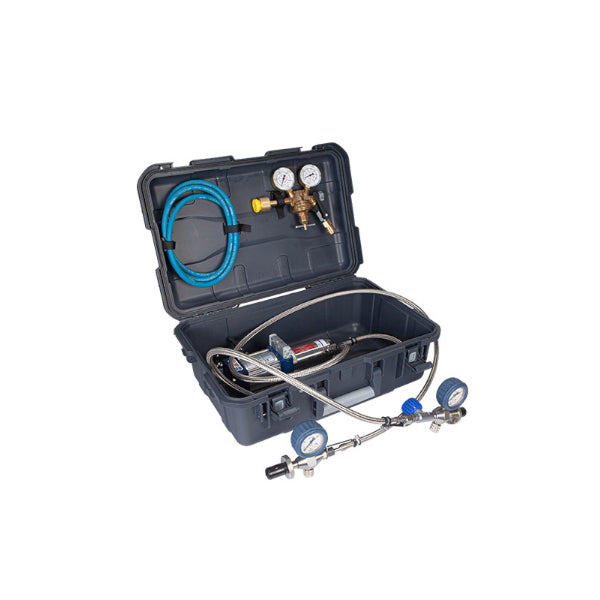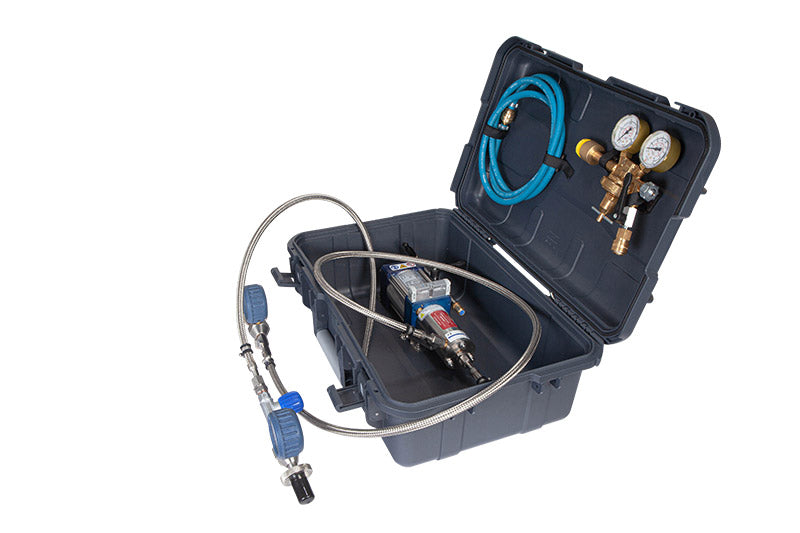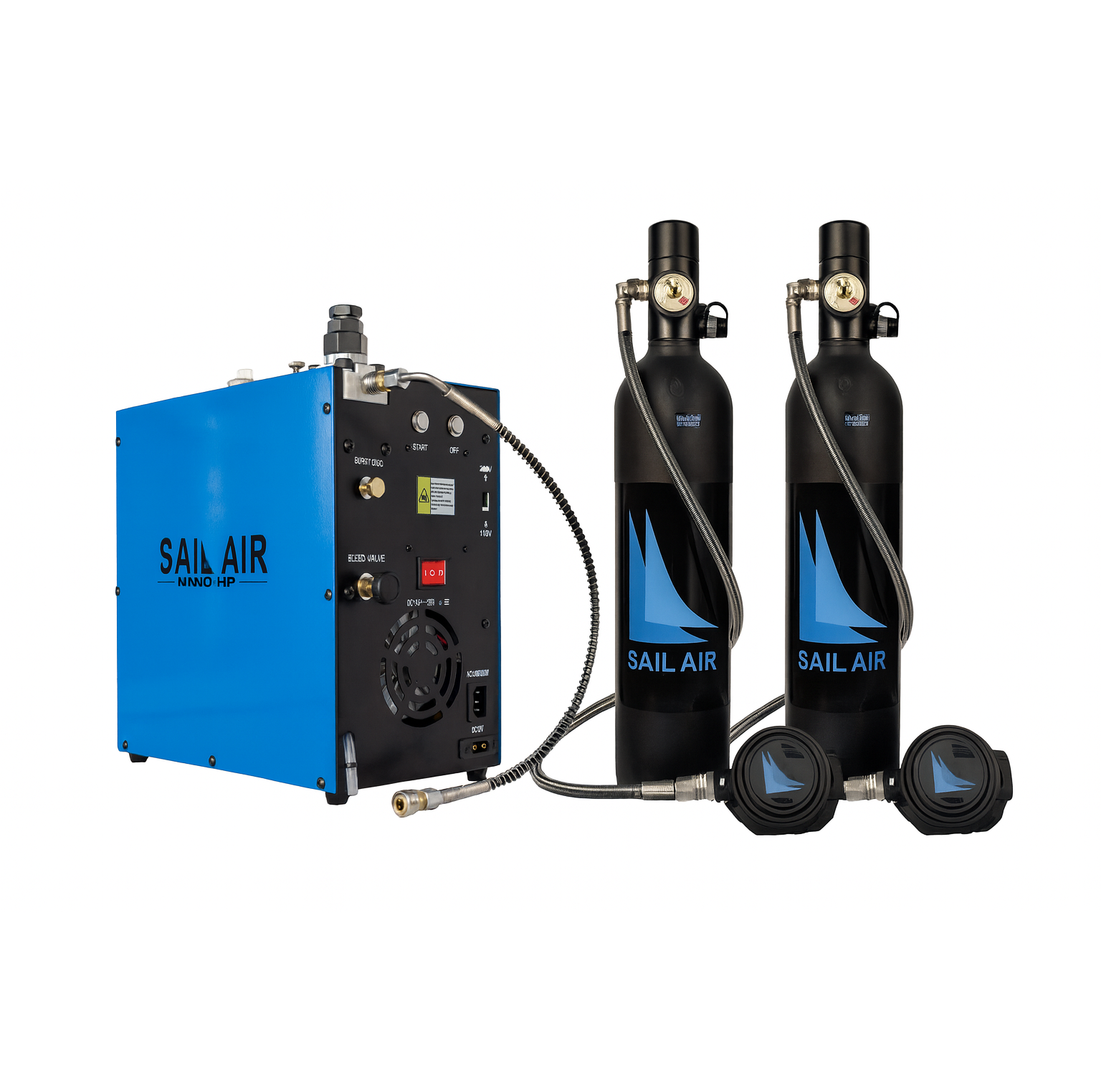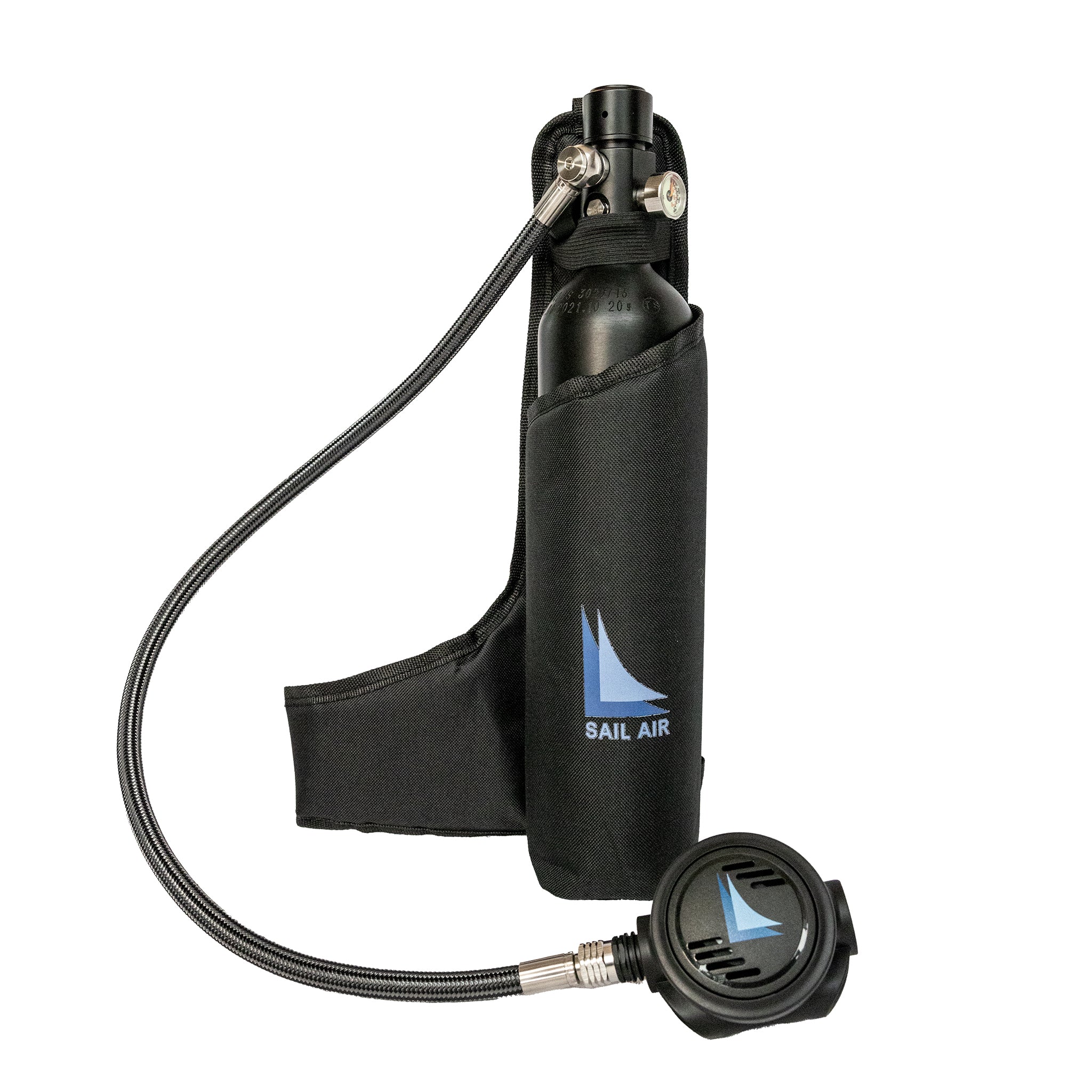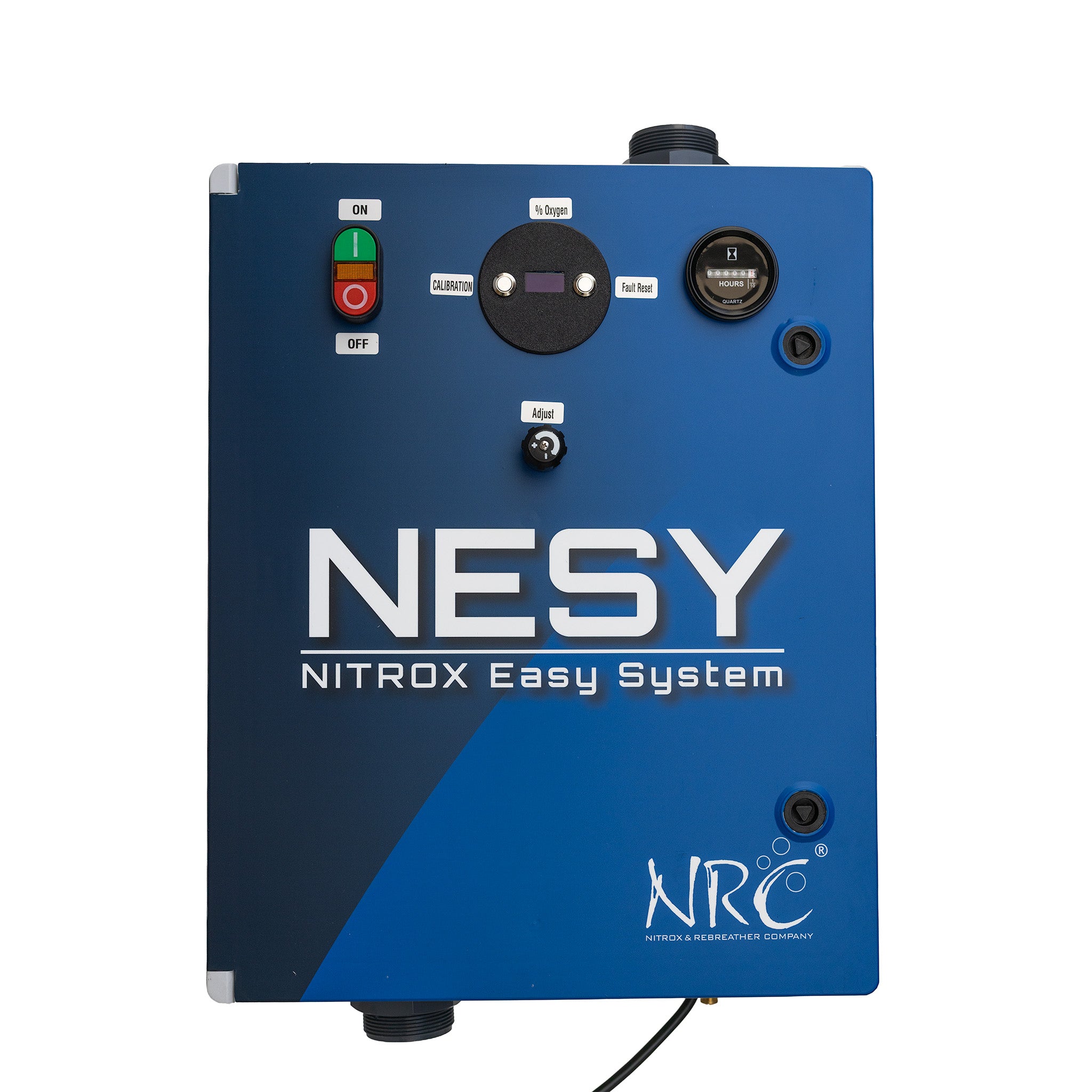What if you could produce your own enriched air and keep every diver breathing safer, longer, and happier, all without relying on an external gas supplier?
In-house Nitrox production is no longer reserved for large operations. Today, even small dive centers and liveaboards can generate enriched air reliably with the right system in place.
In this guide, we break down the three main ways to produce Nitrox and show you how to build a reliable, compliant system that fits your needs.
What Is Nitrox?
Nitrox is a breathing gas made by mixing nitrogen and oxygen, just like regular air. The difference is in the ratio. While standard air has about 21% oxygen, 78% nitrogen, and approximately 1% of other gases, Nitrox used in diving contains more oxygen, typically 32% or 36%.
So why choose Nitrox over regular air? By reducing the amount of nitrogen a diver breathes in, Nitrox helps reduce decompression sickness and shortens surface intervals. This means more time underwater and a smoother experience during repeat dives.
It’s no surprise that Nitrox has become a favorite for dive centers, liveaboards, and professionals. But if it's not just compressed air, how do you actually make it?
Three Ways to Produce Nitrox
There are three main ways to produce Nitrox, and each uses a unique approach to enrich air with the right amount of oxygen.
These are:
1. Partial Pressure Blending (PPB)
Partial Pressure Blending creates Nitrox by adding gases into a scuba cylinder one at a time, based on their individual partial pressures.
How It Works:
-
Add Oxygen: A calculated amount of pure oxygen is added to the cylinder first.
-
Top with Air: Compressed breathing air is added until the final pressure is reached.
-
Analyze: The finished mix is analyzed using an oxygen analyzer to confirm the target oxygen percentage.
This method is flexible and ideal for producing a wide range of Nitrox mixes. However, keep in mind that this method requires oxygen-clean equipment and trained staff, as high levels of oxygen are handled during the process.
Best suited for: Low-volume operations, technical divers mixing custom blends, or smaller dive shops.
2. Continuous Blending (The Mixing Method)
Continuous Blending introduces oxygen into the air stream before it reaches the compressor, allowing for a steady flow of Nitrox during filling.
How It Works:
-
Air Intake: Ambient air is drawn into the system.
-
Oxygen Injection and Mixing: A controlled flow of pure oxygen is metered into the air stream and blended in a static mixer.
-
Compression: The blended Nitrox is compressed and stored in scuba tanks or storage banks.
With proper compressor and oil specifications, this method can safely produce Nitrox blends up to 40% oxygen. Because the oxygen is mixed before the compressor, the process is efficient and consistent and does not require oxygen-clean cylinders for mixes below 40% in many countries.
Best suited for: Small to medium-sized dive centers with a steady demand for Nitrox.
3. Membrane Separation (The Filtering Method)
Membrane Separation produces Nitrox by using a nitrogen-permeable membrane to remove nitrogen molecules from compressed air. This process avoids handling high partial pressure oxygen, making it relatively safe and simple to operate.
How It Works:
-
Low-Pressure Compressor: Produces clean air at around 10 bar (1000–2000 L/min).
-
Refrigeration Dryer: Removes moisture created during compression and cools the air.
-
Filtration System: Three-stage filtering removes contaminants, including oil, particles, and odors.
-
Membrane Module: Separates nitrogen from the air, increasing the oxygen percentage to 32–36%.
-
High-Pressure Compressor: Compresses the Nitrox for storage or direct use in scuba cylinders.
This method delivers a steady output of Nitrox and operates continuously as long as clean air is supplied. It’s efficient, safe, and ideal for high-volume operations where demand is constant.
Best suited for: Large dive centers, liveaboards, or resorts needing continuous Nitrox production at scale.
Nitrox System Comparison
|
Feature |
Partial Pressure Blending |
Continuous Blending |
Membrane System |
|
Oxygen Source |
Pure oxygen cylinder |
Pure oxygen cylinder |
Air only (ambient air) |
|
Best For |
Small shops and technical divers |
Small to medium-sized dive centers |
Large, continuous operations, resorts |
|
Typical Output |
Customizable depending on usage |
Up to 40% O₂ |
32%-40% O₂ |
|
Safety Risk |
High (manual pure O₂ handling) |
Medium (controlled pure O₂ injection) |
Lower (no pure O₂ handling) |
|
Automation |
Fully manual |
Semi-automated |
Fully automated |
|
NRC Example |
The Benefits of an In-House Nitrox System
Investing in a Nitrox system is more than just an equipment upgrade; it's a strategic decision that enhances safety, efficiency, and profitability.
-
Safety and Quality Control
When you produce your own gas, every fill is verified on-site. You know exactly what goes into each tank, and you can maintain consistent oxygen levels that meet training agency and industry standards. -
Operational Efficiency
With Nitrox available on demand, your schedule is no longer tied to delivery trucks, supplier delays, or limited storage space. Tanks can be filled between dives, and your team can focus on guests instead of logistics. -
Lower Long-Term Costs
Once the system is installed, the cost per fill drops dramatically compared to buying pre-mixed cylinders. Over time, the savings compound, especially for operations that run multiple dives per day or across an entire season. -
Full Independence
Whether you operate next to a major port or on a remote island, an in-house system gives you complete control over your gas supply. No price increases, no minimum order quantities, no waiting for someone else’s schedule.
How to Build an In-House Nitrox System
Establishing your own Nitrox production station doesn’t need to be complicated. Here's step by how dive centers and liveaboards scale production nitrox safely and efficiently.
1. Assess Your Operation’s Needs
Begin by evaluating your daily Nitrox demand and the oxygen mixes you plan to offer. Look at factors like fill volume, space, available power, and your team's technical capacity. This helps you choose a system that fits both your current workflow and long-term goals.
2. Choose Your Nitrox Production Method
Once you understand your needs, decide how you'd like to produce Nitrox. You can choose from the three systems explained earlier, each suited to different scales of operation and oxygen percentage requirements. Select the method that fits your workflow and long-term plans.
3. Make Safety the Priority
Proper safety measures are essential in any Nitrox setup. This includes accurate gas monitoring, safe storage practices, and equipment designed for oxygen use. Install oxygen analyzers, maintain backup sensors, label cylinders clearly, and ensure good ventilation in areas where oxygen is handled.
4. Train Your Team
Make sure everyone involved in Nitrox production is properly trained. Your team should know how to analyze gas, monitor oxygen exposure, follow safe filling procedures, and perform basic maintenance. To support this, NRC provides clear user manuals that help operators stay confident and compliant.
Take Control of Your Gas Supply
Since the year 2000, NRC International has been delivering German-engineered gas systems trusted by dive centers, liveaboards, and marine operators in more than 35 countries. Our Nitrox solutions continue that standard, helping you produce enriched air safely, efficiently, and on your own terms.
If you want more control, fewer delays, and a gas system built for real-world diving operations, in-house Nitrox is the smarter choice. It keeps your tanks filled, your schedule steady, and your divers coming back for more.
Upgrade to an NRC Nitrox system today and take full control of your gas supply, no matter where you dive.
Frequently Asked Questions
1. What is Nitrox made of?
Nitrox is simply air (normal air has around 78% nitrogen, 21% oxygen, and approx. 1% of other gases) that has been enriched with extra oxygen. Common recreational mixes are EANx32 (32% oxygen) and EANx36 (36% oxygen).
2. How does Nitrox differ from regular air for diving?
By increasing the oxygen content, you decrease the nitrogen content. Since nitrogen is the primary cause of decompression sickness, breathing less of it reduces your risk and allows for longer no-stop bottom times.
3. Can you generate Nitrox without handling pure oxygen tanks?
Yes. A membrane system, like the NRC Air Pro Series, generates Nitrox by filtering nitrogen out of standard compressed air, eliminating the need to store and handle pure oxygen cylinders.
4. How do I maintain a Nitrox system?
Maintenance involves regular filter changes, visual inspections for leaks or wear, and periodic calibration of your oxygen analyzers. Always follow the manufacturer’s specific service schedule, like the protocols provided by the NRC manual.

